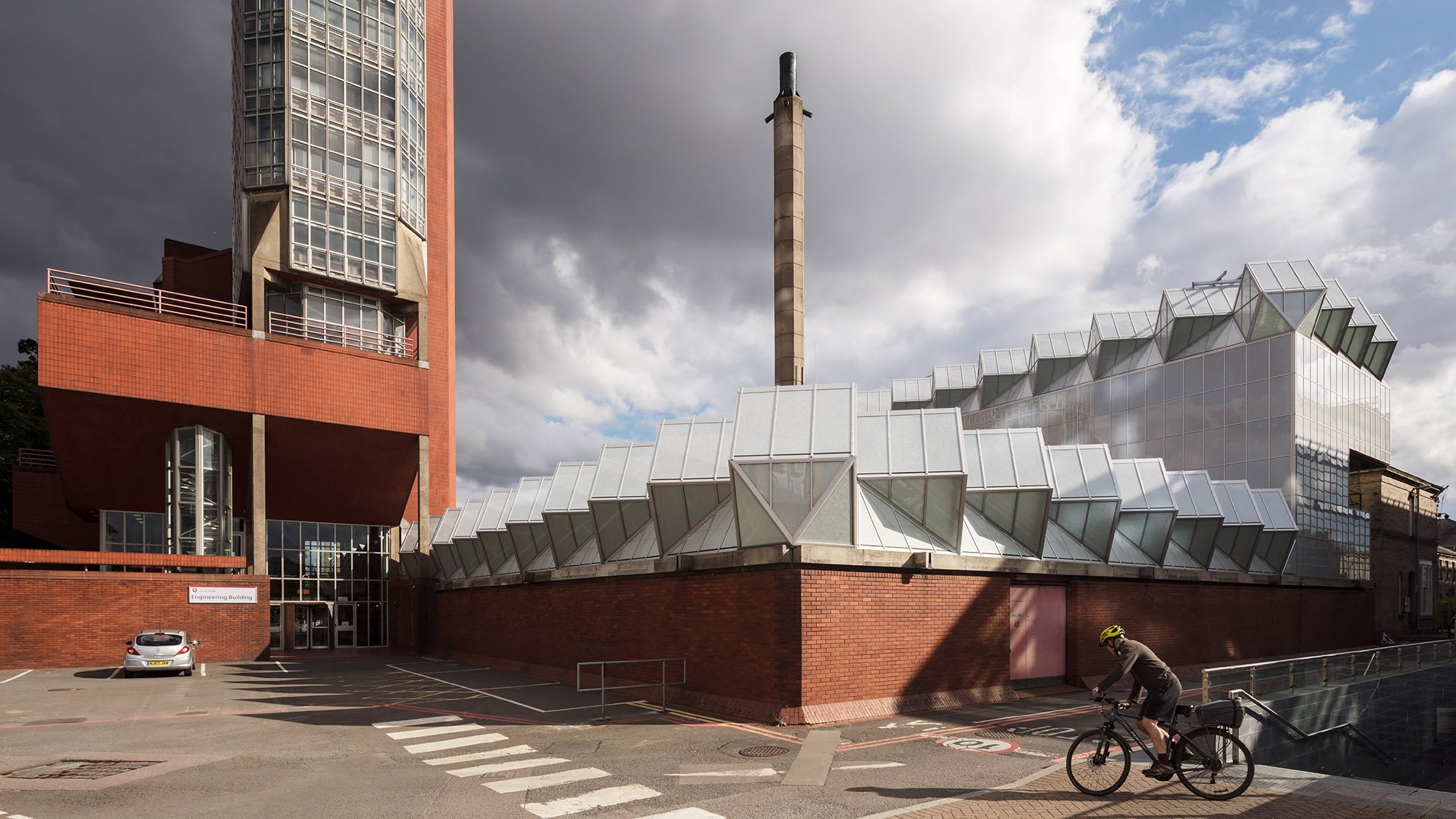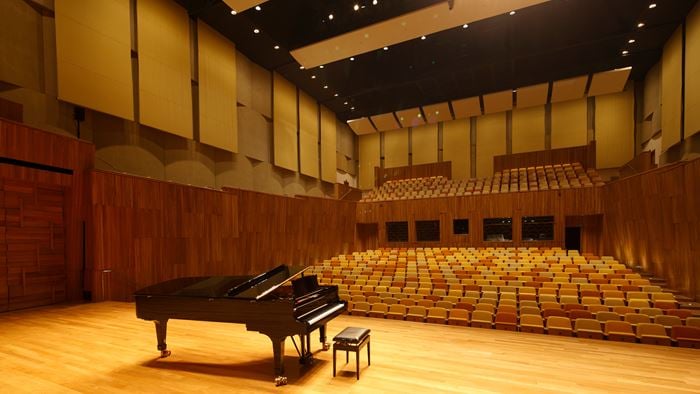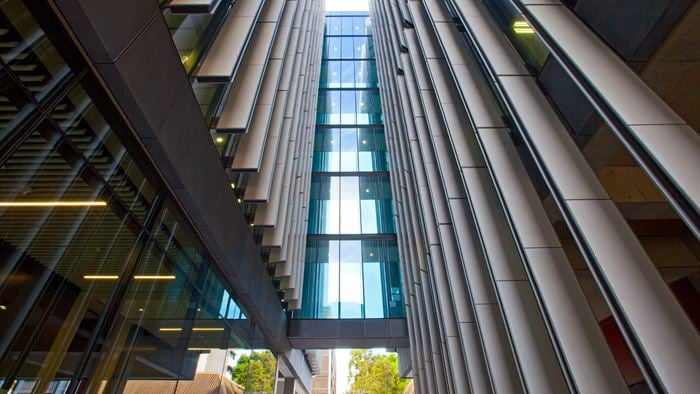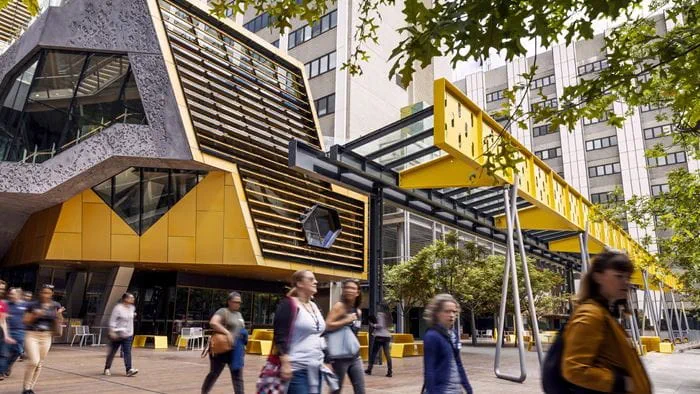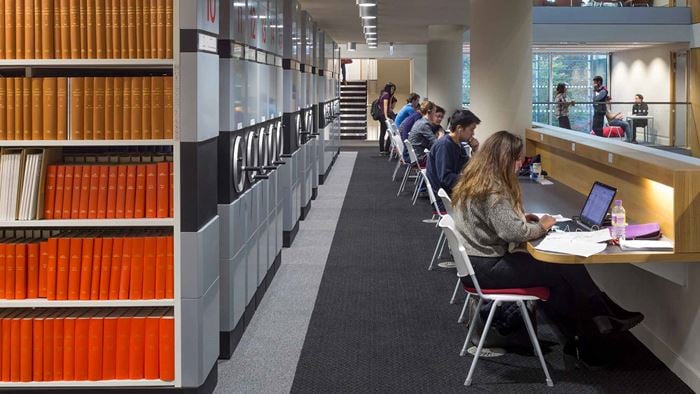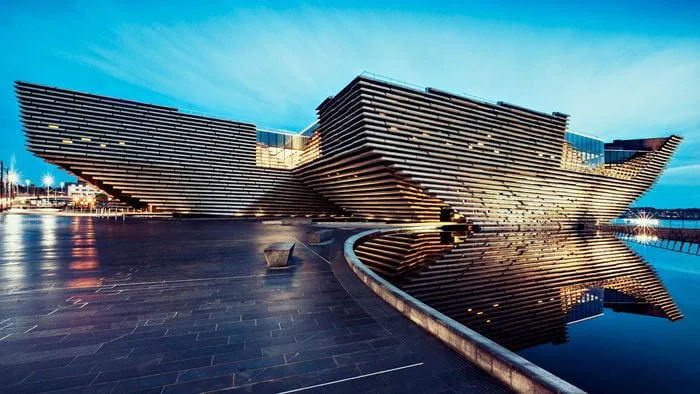The University of Leicester’s Engineering Building is an early example of Post-Modernist design and continues to inspire architects today. The Grade-II* listed building was named among the ten best post-war buildings in Britain by Historic England in 2015, who described it as “a synthesis of traditional and modern elements that is wholly British”.
After over fifty years of service, the University decided to replace the striking translucent roof and facade areas originally designed by James Stirling and James Gowan and refurbish and upgrade the existing building services. During this project, Arup led the building design, heritage consultancy, façade, building services and structural engineering.
Project Summary
1963 official opening
Grade-II* listed building
2,500glass panels on the roof have been replaced
“Arup has been a key member of the Client team that led the Engineering Building project through countless technical challenges. They have maintained the highest design and conservation standards, and guided the heritage stakeholder negotiations with a sense of calm and clarity. Together with an excellent team of contractors Arup has delivered a spectacular finished product, preserving and sensitively upgrading this most exceptional of twentieth-century buildings. The University of Leicester is delighted with the result. ”
Improvements on the building performance
The building was covered by a triangular trussed steel frame roof with distinctive diamond-shaped perimeter rooflights. It was thermally inefficient and the thin glass and roof structure made access for even basic cleaning and repair impossible in places. By upgrading the performance of the glazing systems we have provided an envelope which is watertight and airtight, with natural ventilation openings to relieve high temperatures at the top of the double-height volumes.
The new roof
The new glazing had to look right architecturally and perform to 21st century standards yet remain as true to the original as possible. Although it may seem relatively simple to remove an old roof and replace it with one of the same shape and of similar materials, the new roof had to take into account the movement of the older structure and much stricter performance and safety standards. 2,500 glass panels on the roof have been replaced, each unique to fit with the existing warped structure. As a listed building, this all had to be carried out to the satisfaction of the local authority conservation office, Historic England and the Twentieth Century Society.
The new double-glazed units are twice as heavy and more than twice as thick as the original single-glazing. The new glazing bars, however, are significantly narrower than industry standard, providing structural integrity yet replicating the original light structure.
New building services with a better performance
Arup also replaced the original building services with new equipment to meet the functional demands of the department today. We refurbished and refitted original components where possible and new elements have been hidden in floor trenches or bespoke-made to complement the functional aesthetic of the interior spaces.
Following the University’s commitment to reduce CO2 emissions across its campus, the Engineering Building’s new control system will be tailored to its changing patterns of use in future, and synchronised with systems in the towers in a later phase of refurbishment.
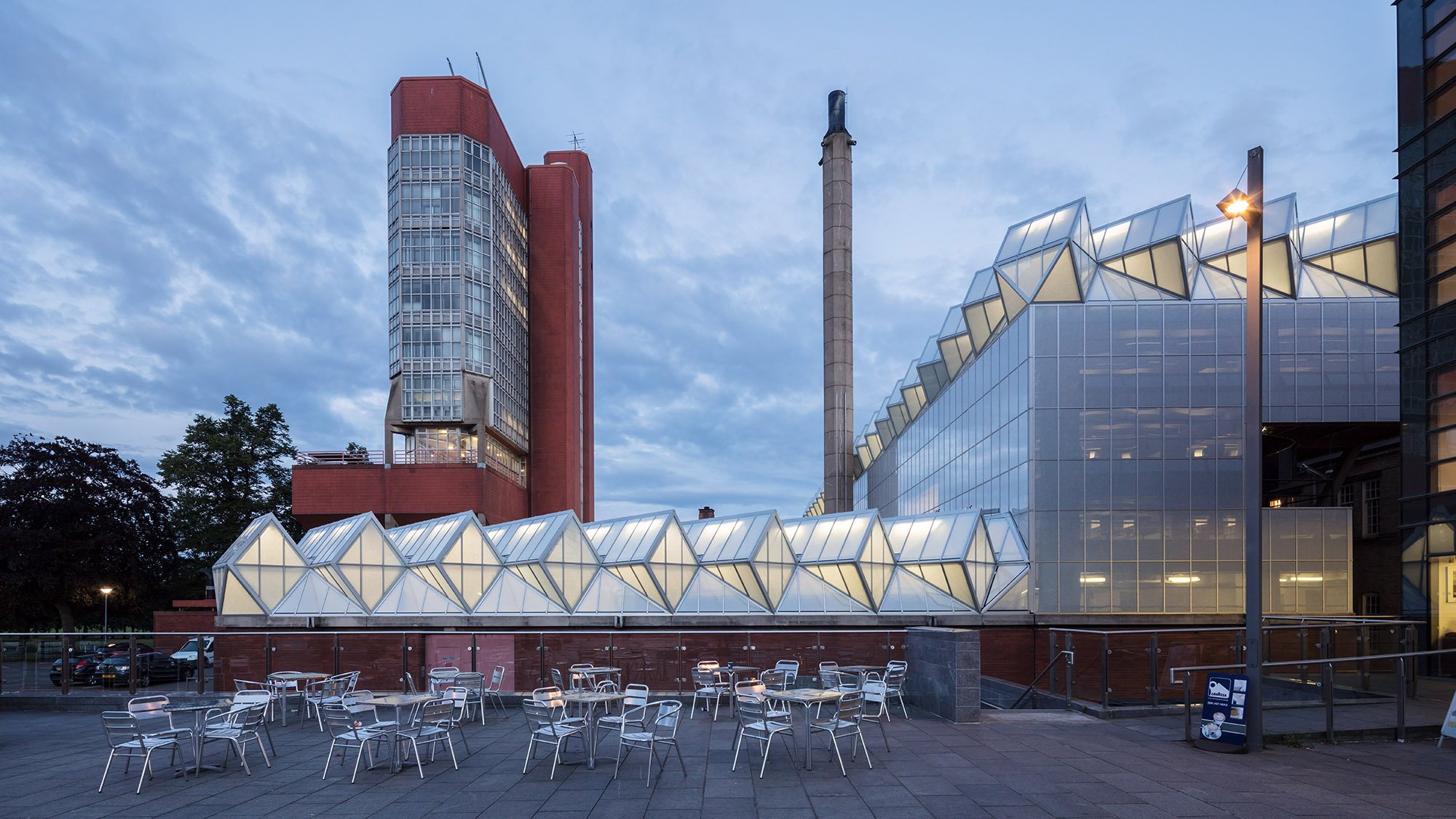
Long term preservation
The University also devised a ‘project charter’ which compelled everyone to cooperate in preserving the historic status of the building. The minutiae of every detail was refined again and again to ensure the restoration was as authentic as possible.
The contemporary interventions to the services and the façade provide a comfortable environment with proper heating, cooling and ventilation, keeping its original function as an engineering building from which students can learn and be inspired by.
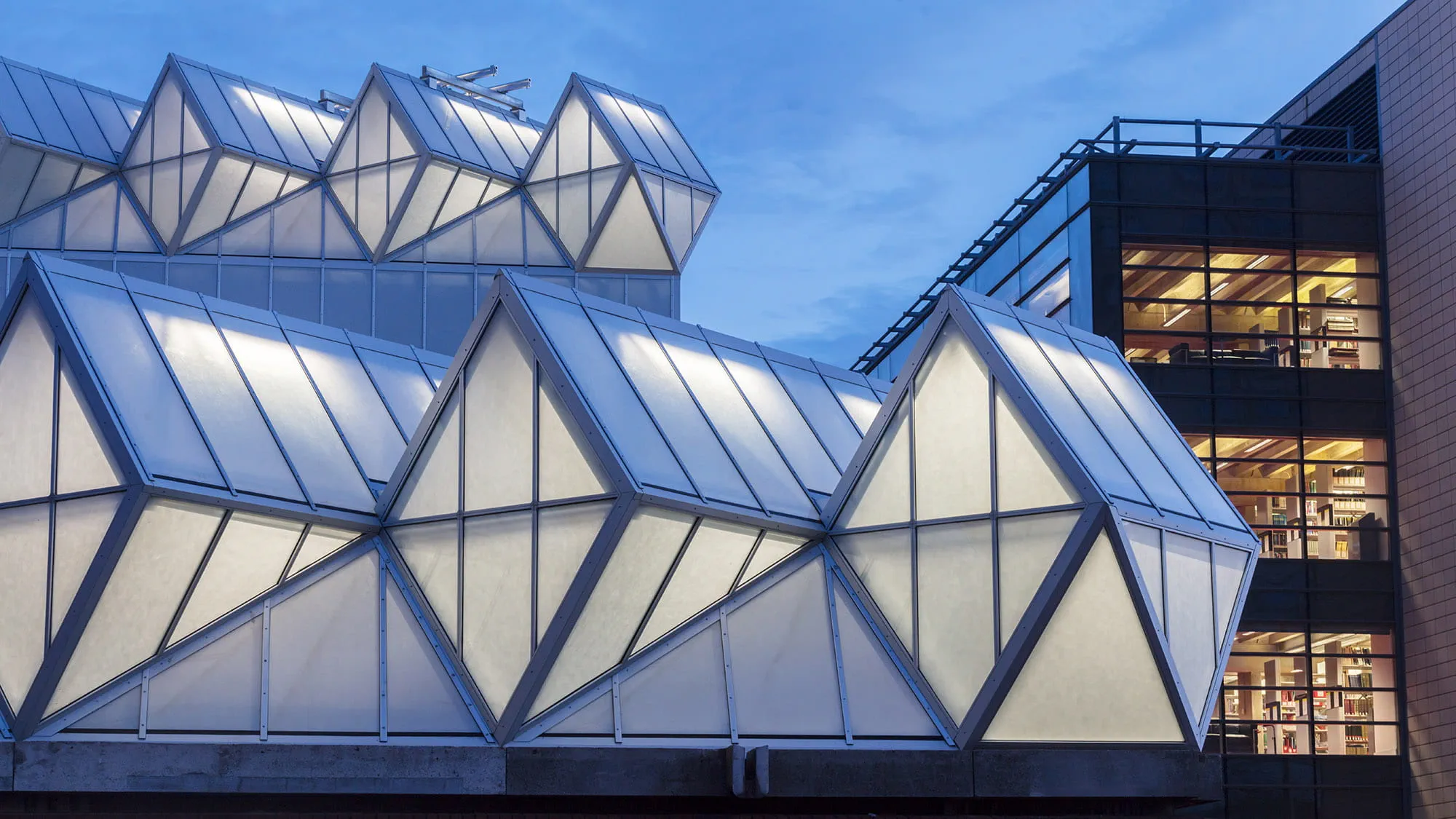 ;
;
